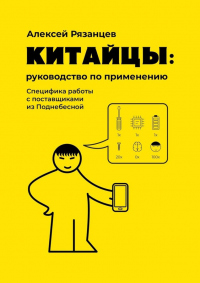Читать книгу "Нарциссический абьюз. Как распознать манипуляции, разорвать травмирующую связь и вернуть контроль над своей жизнью - Шахида Араби"
Шрифт:
Интервал:
Закладка:
Teicher, M. (2006). Sticks, Stones, and Hurtful Words: Relative Effects of Various Forms of Childhood Maltreatment. American Journal of Psychiatry Am J Psychiatry, 163 (6), 993. doi:10.1176/appi.ajp.163.6.993.
Centifanti, L. C., Fanti, K. A., Thomson, N. D., Demetriou, V., & Anastassiou-Hadjicharalambous, X. (2015). Types of Relational Aggression in Girls Are Differentiated by Callous-Unemotional Traits, Peers and Parental Overcontrol. Behavioral sciences (Basel, Switzerland), 5 (4), 518–536. https://doi.org/10.3390/bs5040518.
Chester, D.S., & DeWall, C. N. (2016). Sound the Alarm: The Effect of Narcissism on Retaliatory Aggression Is Moderated by dACC Reactivity to Rejection. Journal of Personality, 84 (3), 361–368.
Grijalva, E., Newman, D., Tay, L., Donnellan, M., Harms, P., Robins, R., & Yan, T. (2015). Gender Differences in Narcissism: A Meta-Analytic Review. Psychological Bulletin, 141 (2), 261–310.
Hoertel, N. P., Hugo, L., Pierre, B., Carlos, G., Christophe R., Margaux, Limosin, F. (2018). Examining sex differences in DSM-IV-TR narcissistic personality disorder symptom expression using Item Response Theory (IRT). Psychiatry Research, 260, 500–507.
Ostrov, J., Hart, E., Kamper, K., & Godleski, S. (2011). Relational Aggression in Women during Emerging Adulthood: A Social Process Model. Behavioral Sciences & the Law, 29 (5), 695–710.
American Psychiatric Association. (2013). Diagnostic and statistical manual of mental disorders (5th ed.). Arlington, VA: American Psychiatric Publishing.
Babiak, P., Neumann, C. S., & Hare, R. D. (2010). Corporate psychopathy: Talking the walk. Behavioral sciences & the law, 28 (2), 174–193. https://doi.org/10.1002/bsl.925.
Brooks, Fritzon, K., & Watt, B. (2019). Overview of Theories and Empirical Findings Relevant to Psychopathic Personality Characteristics Amongst High-Functioning Populations. In Corporate Psychopathy (pp. 1–45). Springer International Publishing. https://doi.org/10.1007/978-3-030-27188-6_1.
Comaford, C. (2016, September 20). 75 % of workers are affected by bullying – here’s what to do about it. Forbes. Retrieved July 1, 2017, from https://www.forbes.com/sites/christinecomaford/2016/08/27/the-enormous-toll-workplace-bullying-takes-on-your-bottom-line/#1c6c83a45595.
Dåderman, A. M., & Ragnestål-Impola, C. (2019). Workplace bullies, not their victims, score high on the Dark Triad and Extraversion, and low on Agreeableness and Honesty-Humility. Heliyon, 5 (10), e02609. https://doi.org/10.1016/j.heliyon.2019.e02609.
Sheehy, B., Boddy, C., & Murphy, B. (2020). Corporate law and corporate psychopaths. Psychiatry, psychology, and law: an interdisciplinary journal of the Australian and New Zealand Association of Psychiatry, Psychology and Law, 28 (4), 479–507. https://doi.org/10.1080/13218719.2020.1795000.
Stout, M. (2004). The sociopath next door: The ruthless versus the rest of us. New York: Broadway Books.
Workplace Bullying Institute. The WBI definition of workplace bullying. Retrieved July 1, 2017, from http://www.workplacebullying.org/.
Westmoreland, D. M. (2017, May 29). I had become my worst nightmare – landing in the mental health ward. Retrieved July 1, 2017, from http://www.workplacebullyingsupport.com/2017/03/18/become-worst-nightmare-landing-mental-health-ward/.
In Sheep’s Clothing: Understanding and Dealing with Manipulative People by George Simon, Jr. Ph.D.
The Sociopath Next Door by Dr. Martha Stout.
Psychopath Free by Jackson MacKenzie.
Complex PTSD: From Surviving to Thriving by Pete Walker.
The Body Keeps the Score by Bessel Van der Kolk, MD.
Stop Spinning, Start Breathing by Zari Ballard.
Without Conscience: The Disturbing World of the Psychopaths Among Us by Robert D. Hare, Ph.D.
Soul Vampires by Andrea Schneider, LCSW, MSW.
Narcissistic Lovers: How to Cope, Recover, and Move On by Cynthia Zayn and M.S. Kevin Dribble.
Malignant Self-Love by Sam Vaknin.
Confessions of a Sociopath by M. E. Thomas.
Help! I’m in Love with a Narcissist by Steven Carter and Julia Sokol.
Unashamed Voices: True Stories Written by Survivors of Domestic Violence, Rape and Fraud: Exposing Sociopaths in Our Midst by Paula Carrasquillo and Lisa M. Ruth.
Bancroft, L. (2002). Why does he do that?: Inside the minds of angry and controlling men. New York: Putnam’s Sons.
Bardenstein, K. K. (2009). The Cracked Mirror: Features of Narcissistic Personality Disorder in Children. Psychiatric Annals, 39(3). doi:10.4135/9781412950510.n565.
Bergland, C. (2013, January 22). Cortisol: Why “The Stress Hormone” Is Public Enemy No. 1. Retrieved from https://www.psychologytoday.com/blog/the-athletes-way/201301/cortisol-why-the-stress-hormone-is-public-enemy-no-1.
Berman, M. G., Jonides, J., & Kaplan, S. (2008). The cognitive benefits of interacting with nature. Psychological Science, 19, 1207–1212.
Buckels, Erin E., Paul D. Trapnell, and Delroy L. Paulhus. “Trolls just want to have fun.” Personality and Individual Differences. 67 (2014): 97–102.
Brummelman, E., Thomaes, S., Nelemans, S. A., Castro, B. O., Overbeek, G., & Bushman, B. J. (2015). Origins of narcissism in children. Proceedings of the National Academy of Sciences Proc Natl Acad Sci USA, 201420870. doi:10.1073/pnas.1420870112.
Carnell, S. (2014, May 14). Bad Boys, Bad Brains. Retrieved from https://www.psychologytoday.com/blog/bad-appetite/201205/bad-boys-bad-brains.
Carnes, P. (2013). The Betrayal Bond: Breaking Free of Exploitive Relationships. Health Communications Incorporated.
Cardenas, V. A., Samuelson, K., Lenoci, M., Studholme, C., Neylan, T. C., Marmar, C. R., Schuff, N., & Weiner, M. W. (2011). Changes in brain anatomy during the course of posttraumatic stress disorder. Psychiatry research, 193 (2), 93–100. https://doi.org/10.1016/j.pscychresns.2011.01.013.
Cascio, C. N., O’Donnell, M. B., Tinney, F. J., Lieberman, M. D., Taylor, S. E., Strecher, V. J., & Falk, E. B. (2016). Self-affirmation activates brain systems associated with self-related processing and reward and is reinforced by future orientation. Social cognitive and affective neuroscience, 11 (4), 621–629. https://doi.org/10.1093/scan/nsv136.
Choi, J., Jeong, B., Rohan, M. L., Polcari, A. M., & Teicher, M. H. (2009). Preliminary Evidence for White Matter Tract Abnormalities in Young Adults Exposed to Parental Verbal Abuse. Biological Psychiatry, 65 (3), 227–234. doi:10.1016/j.biopsych.2008.06.022.
Crowell, S. E., Beauchaine, T. P., & Linehan, M. M. (2009). A Biosocial Developmental Model of Borderline Personality: Elaborating and Extending Linehan’s Theory. Retrieved from http://www.ncbi.nlm.nih.gov/pmc/articles/PMC2696274/.
Creswell, J. D., Dutcher, J. M., Klein, W. M., Harris, P. R., & Levine, J. M. (2013). Self-Affirmation Improves Problem-Solving under Stress.PLoS ONE, 8 (5). doi:10.1371/journal.pone.0062593.
Field, T., Hernandez-Reif, M., Diego, M., Schanberg, S., & Kuhn, C. (2005). Cortisol Decreases And Serotonin And Dopamine Increase Following Massage Therapy. International Journal of Neuroscience, 115 (10), 1397–1413. doi:10.1080/00207450590956459.
Fenichel, O. (1945). The psychoanalytic theory of neurosis. New York: W.W. Norton & Co.
Fertuck, E. A. (2009, July 29). Borderline “Empathy” Revisited. Retrieved from https://www.psychologytoday.com/blog/science-the-border/200907/borderline-empathy-revisited.
Foucault, M., & Hurley, R. (1988). The history of sexuality. New York: Vintage Books.
Gabriel, M. T., Critelli, J. W., & Ee, J. S. (1994). Narcissistic Illusions in Self-Evaluations of Intelligence and Attractiveness. J Personality Journal of Personality, 62 (1), 143–155. doi:10.1111/j.1467–6494.1994.tb00798.x.
Haslam, C., & Montrose, V. T. (2015). Should have known better: The impact of mating experience and the desire for marriage upon attraction to the narcissistic personality. Personality and Individual Differences, 82, 188–192. doi:10.1016/j.paid.2015.03.032.
Hinduja, S. & Patchin, J. W. (2010). Bullying, Cyberbullying, and Suicide. Archives of Suicide Research, 14 (3), 206–221.
Klein, S. (2013, April 19). Adrenaline, Cortisol, Norepinephrine: The Three Major Stress Hormones, Explained. Retrieved from http://www.huffingtonpost.com/2013/04/19/adrenaline-cortisol-stress-hormones_n_3112800.html.
Kreger, R. (2012, April 4). Why they can‘t feel joy: Narcissistic shallow emotions. Retrieved from https://www.psychologytoday.com/blog/stop-walking-eggshells/201204/why-they-cant-feel-joy-narcissistic-shallow-emotions.
Lazar, S. W., Kerr, C. E., Wasserman, R. H., Gray, J. R., Greve, D. N., Treadway, M. T., Fischl, B. (2005). Meditation experience is associated with increased cortical thickness. NeuroReport, 16 (17), 1893–1897. doi:10.1097/01.wnr.0000186598.66243.19.
Lemonick, M. D. (2007, July 05). How We Get Addicted. Retrieved from http://content.time.com/time/magazine/article/0,9171,1640436-3,00.html.
Louis De Canonville, Christine (2015). The Three Faces of Evil: Unmasking the Full Spectrum of Narcissistic Abuse, Black Card Books.
Marazziti, D., Akiskal, H. S., Rossi, A., & Cassano, G. B. (1999). Alteration of the platelet serotonin transporter in romantic love. Psychological Medicine Psychol. Med., 29 (3), 741–745. doi:10.1017/s0033291798007946.
Mayer, F.S., Frantz, C. M. P., Bruehlman-Senecal, E., & Doliver, K. (2009). Why is nature beneficial? The role of connectedness in nature. Environment and Behavior, 41, 607–643.
McGowan, K. (2004, November 1). Addiction: Pay Attention. Retrieved from https://www.psychologytoday.com/articles/200411/addiction-pay-attention.
Mental Health Daily. (2013). How To Overcome Adrenaline Addiction: Tips From A Former Addict. Retrieved March 4, 2016, from http://mentalhealthdaily.com/2013/03/02/how-to-overcome-adrenaline-addiction-tips-from-a-former-addict/.
Odendaal, J., & Meintjes,
Внимание!
Сайт сохраняет куки вашего браузера. Вы сможете в любой момент сделать закладку и продолжить прочтение книги «Нарциссический абьюз. Как распознать манипуляции, разорвать травмирующую связь и вернуть контроль над своей жизнью - Шахида Араби», после закрытия браузера.




